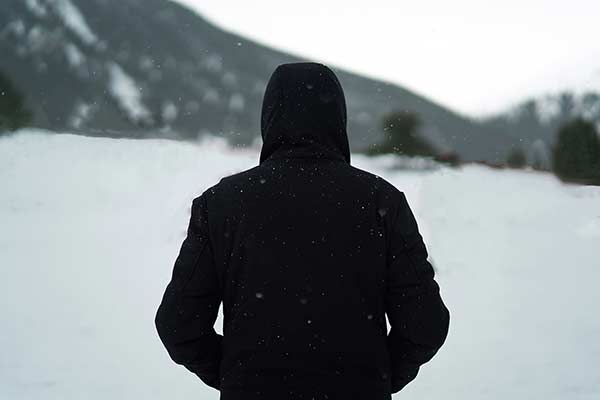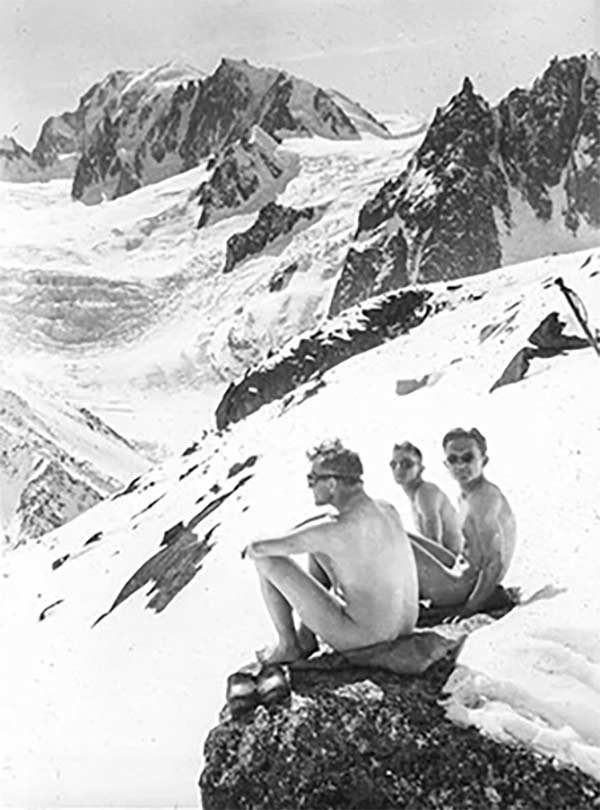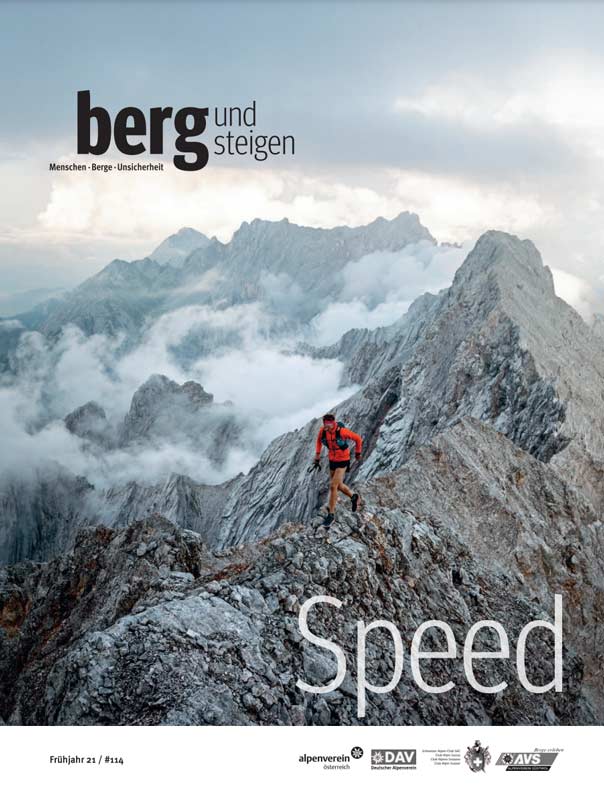Those who know nothing must believe everything. From myths about heat loss through the head to the question of whether women get colder than men. Eight facts on the subject.
An article by Alexandra Schweikart – published for the first time in the specialist journal mountaineering
1. Is most heat lost through the head?
When looking at thermal camera images, the assumption is obvious. The head is the brightest part, that's where the heat is lost! In fact, it's a myth: the head loses no more or less heat than any other part of the body. However, the face and head are often uncovered. So: hats or hoods on in winter, then your head stays warm.

2. What warms better: down or synthetic fibers?
Regardless of the material, the thicker the lined jacket, the warmer it is. The so-called R value describes the heat output, it increases linearly up to a layer thickness of around eight centimeters of insulating layer, after which the curve flattens out. With even thicker jackets, you tend to carry around useless weight. With the same outer and inner material and the same thickness of filling, down is lighter than synthetic fibres, and one speaks of a better "warmth-to-weight ratio".
3. How does textile thermal insulation work?
Thermal insulation describes the ability of a material to block body heat. But how does the laboriously produced body heat get lost in the first place? Three mechanisms work together:
- heat conduction: Molecules move, collide and pass on heat like falling dominoes (the handle of a pot gets hot).
- thermal radiation: The human body emits long-wave electromagnetic radiation (similar to a radiator).
- convection: Currents in gases and liquids lead to heat loss through transport (gas bubbles rise in the water).
Blocking these three loss paths creates thermal insulation. Heat conduction is reduced by air-trapping, branched materials such as down. Air is a poor conductor of heat. Thermal radiation can be prevented by reflecting the heat back to the body. For this purpose, microfibers made of plastic are used, so-called fiber fleece, in which the microfibers are arranged very densely. The thicker and denser a fiber fleece, the less heat gets through.
4. Why does the rock have more "grip" when it's cold?
We have a particularly large number of sweat glands on our hands and soles of our feet: a relic from the time when we climbed trees with our hands and feet. After all, wood is easy to grip with slightly damp hands. Sweat on the fingers annoys us when rock climbing, since the friction between fingers and rock depends on what is known as the coefficient of friction. Unfortunately, this is all the smaller – i.e. worse – the higher the temperature is and the wetter the fingers are. When it's cold, the body produces less sweat, so the static friction, the "grip" on the rock is significantly better.
5. Does synthetic fiber dry faster than wool?
The amazing answer is: No! At the same temperature and humidity, textiles dry at the same rate, so they lose exactly the same number of grams of water per minute. The difference lies in their capacity to absorb moisture and the associated drying time. If a polyester shirt can absorb 15 grams of sweat, but a wool shirt of the same weight can absorb 35 grams, it just takes longer for the wool shirt to regain its original weight when drying.
6. Do women freeze more than men?
Definitely yes. Women get cold hands and feet more quickly because the heat tends to retreat to their torso and they have proportionately less muscle mass that generates heat when they tremble. Since the general feeling of cold often depends on the hands, women subjectively freeze faster. Another study exposed men and women to a temperature of 12°C for one hour: here the women endured longer than the men.
7 . How does goose bumps come about?
A few million years ago, our ancestors had magnificent fur that protected and warmed them. When it got really cold, the hair on the body stood up to create an insulating layer with a lot of trapped air between the hairs. A relict from this time is the so-called “hair erecting muscles”, which produce goosebumps. With our current hair density now without a warming effect.

8. Can clothing cool?
Our body works best at an “operating temperature” of 37 degrees Celsius. He tries to keep this temperature constant under all circumstances, for example by sweating during great exertion. This cooling mechanism works perfectly when naked, any kind of clothing is in the way here. When it's hot, the best substances are those that disturb the body as little as possible in its regulatory work, everything else is more of an advertising invention.
about the author

Alexandra Schweikart holds a doctorate in chemistry and is a textile scientist, sports climbing teacher and expert in PPE. As a science journalist, she enjoys looking behind the scenes of the outdoor industry.
About the magazine bergundstieg

Bergundstieg is an international magazine for safety and risk in mountain sports and illuminates the topics of equipment, mountain rescue, rope technology, accident and avalanche knowledge. Bergundstieg is published by the Alpine Associations of Austria (PES), Germany (DAV), South Tyrol (AVS) and Switzerland (Customer Service).
That might interest you
- Ice climbing pro tips: Assess ice conditions and assess them on site
- Tour tip: Ice climbing in the Mittelland
- Stefano Ghisolfi scores Excalibur (9b+) | Hardest route in Italy
+ + +
Credits: Cover picture Brian Rodriguez | Unsplash

